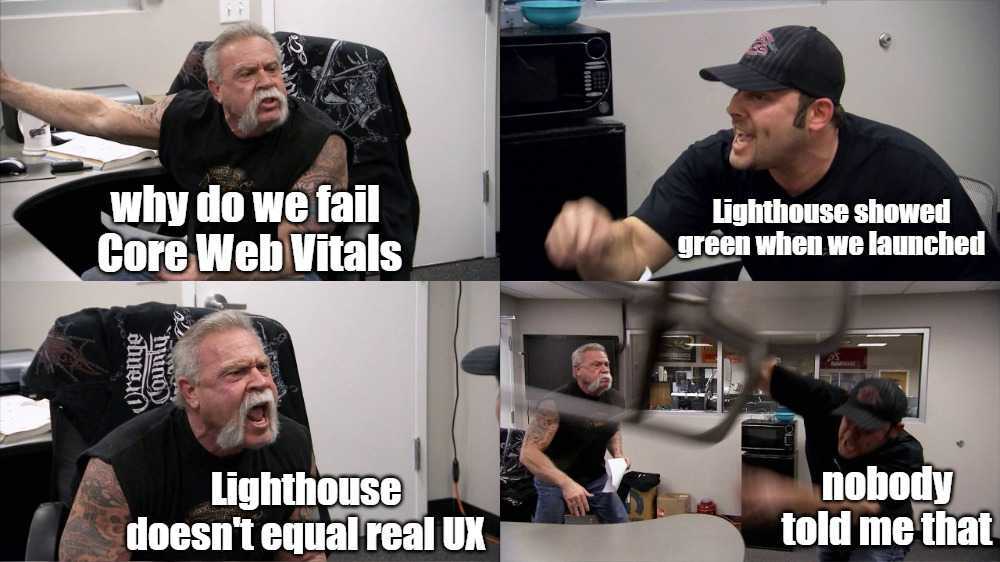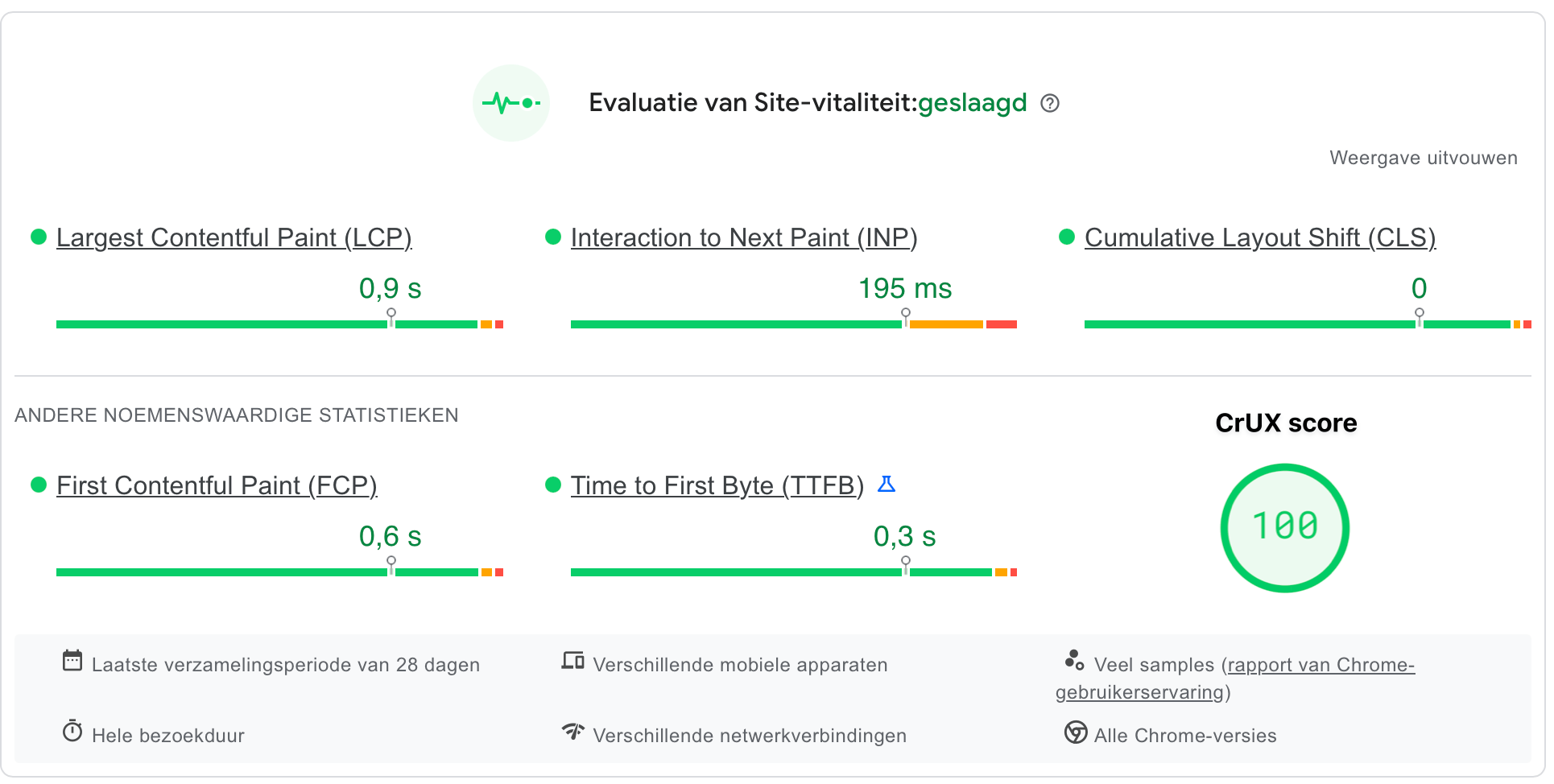
Karlijn Löwik (@karlijnlowik.bsky) is the CEO & Co-founder of RUMvision | Women in tech advocate | International speaker | Lover of memes | Board member Mage-OS NL | Co-chair RUM W3C | Ambassador to improve Sitespeed User Experience (SUX)
2024 was the year my public speaking career really took off – I did a quick count and realized I’ve done 10 speaking events about web performance across 5 countries and 2 continents. You could even argue Great Britain is another continent after Brexit (3 continents then! 😉)

Giving my talk “The state of Web Performance in 2024” to Meet Magento UK to full room
As I sit here on a sunny terrace in Tenerife, enjoying what feels like a well-deserved break, I’ve been reflecting on what I’ve learned about the state of web performance in eCommerce, particularly through my mission of promoting Sitespeed User Experience (SUX). Yes, I really did push that term quite hard – to the point where my talk in New York was called “SUX and the City.” Because hey, good SUX sells, right?
So, what did I learn trying to sell SUX and Core Web Vitals to the eCommerce community? And what might we learn from that as a community going into 2025?
What we think everyone knows about Core Web Vitals (but they don’t)
Here’s something that surprised me throughout my speaking tour: Core Web Vitals aren’t nearly as well understood as we in the performance community might think. Sure, the term has been launched rather well these past years, but the reality on the ground is quite different.
Through countless conversations after my talks, I’ve noticed:
- Many eCommerce professionals know Core Web Vitals relate to speed and performance, but that’s often where the understanding stops
- There’s widespread confusion between Core Web Vitals and Lighthouse scores (more on that particular headache in a moment)
- Business stakeholders, especially those on the management track, often haven’t even heard of them
- If they have, they very often think it is an SEO issue. Or an issue on the backend and hosting side. Very rarely is it on the radar as something where they need to play an advocate role in to promote in their shop
- But here’s the good news: once explained properly, people get genuinely excited about the potential and want to work on it
Getting performance on the radar of all layers of the organization
I’ll be the first to admit – I’m not a developer nor a PageSpeed consultant. I prefer to call myself a RUM and web performance ambassador (or you know, RUMvision endboss 😉). But coming from a family of teachers and public servants, I’ve discovered I have a knack for simplifying complicated things. It’s not about dumbing things down; it’s about making them accessible.
Take Largest Contentful Paint (LCP) for example. Yes, it’s a mouthful of technical jargon. But when I explain it as “the time it takes for the important stuff on your page to show up” – suddenly everyone in the room knows exactly what I’m talking about. Because who hasn’t rage-quit a website that took forever to load?
To stay near the basics, allow for visual examples, add a good number of memes along the way and everyone in eCommerce understands what Core Web Vitals are about and why they impact UX (and thus conversions).
One of my favorite pieces of feedback is when people tell me my talks are both fun and hands-on. That’s exactly what I’m aiming for – because if you’re not enjoying learning about web performance, will you be happy to work on improving it? And easy wins are great wins, because it gets you excited to improve even more!
Should we as a community reach out beyond developer summits?
This positive feedback got me thinking about a comment someone made at the web performance unconference last month. We were talking about how to promote performance. Someone mentioned he got the feedback (I can’t remember who, sorry!) that talks about web performance are often very technical or can feel like they are about pointing blame to developers, instead of inspiring and accessible. It was a compliment to him, that his talks weren’t. I’ve been thinking about that a lot since I heard it. I’m not sure if I agree with that feedback, but it does sound like there is an opportunity here.
Should we promote more easily accessible talks to business owners, junior developers and SEO’ers, in addition to our true technical web performance talks? I think we should. And this is actually one of my goals as new co-chair to the W3C RUM group: mainstreaming RUM and web performance.
Let’s have a real talk about that Lighthouse score
Okay, since rants are allowed in this performance calendar, let me share my thoughts about the Lighthouse score situation.

(well me: I told them that 😉)
Don’t get me wrong – I know Lighthouse has been valuable. I know it’s been incredibly successful. But in my opinion, it’s time for it to go.
Here’s why:
- Google tells us to focus on Core Web Vitals, but keeps the Lighthouse score prominently displayed in PageSpeed Insights
- This creates massive confusion about what actually matters (which is Core Web Vitals)
- I can’t count how many times I’ve had business owners, developers or SEO specialists insist their site is fast because they have a green 90+ score (on desktop…) and that the green Lighthouse score means they pass Core Web Vitals
- Meanwhile, their actual user experience metrics tell a completely different story (see also, Noam’s blog post about Goodhart’s Law in action on the anti-patterns this creates)
- What also happens a lot in eCommerce, and this to me is even more frustrating, is that people are so convinced that the green Lighthouse score is the goal to aim for, that they will not accept that Core Web Vitals / RUM data matter more
Looking ahead to 2025, it would be very beneficial if, with the deprecation of the Lighthouse panel within DevTools, the Lighthouse score in PSI would also disappear.
However, I’ve been complaining about this for 2 years now, so I also know that that is not about to happen anytime soon due to political reasons. But you never know, never hurts to try again, right?
Can we introduce a CrUX score then?
The magic of the Lighthouse score is in its visual simplicity. If we can’t retire the Lighthouse score, can we at least get a CrUX score based on Core Web Vitals in PSI as well?

Because I know: in an ideal world you want users to focus on all Core Web Vitals equally and tell a balanced story etc. BUT:
If we can’t get rid of Lighthouse, I need something else to hit people over the head with that is almost as easy to understand. A single CrUX score could do that:
- Business owners and SEO could understand it with one look
- We would have a metric that is based on real users’ experiences
- Users are already used to having a single score from Google
- Deep diving could still be done in the Performance Panel + RUM
- If we really want to take it to the next level, we could make the CrUX score visually equal to the Lighthouse score and would change the Lighthouse score to a completely different UI
At RUMvision, we’re already calculating a UX score for over 14,500 sites – and we’d be happy to share our methodology with Google.
Ponderings as we head into 2025
The numbers don’t lie – we’re seeing more sites passing Core Web Vitals each year. That’s fantastic! But we still face a challenge in getting web performance awareness into the mainstream. And that’s where I think talks like mine (and others, I’m not alone in doing these talks!), alongside the more technical deep dives from the developer community, play a crucial role.
Because here’s what I’ve learned this year: people really want to learn about this stuff. When you make it accessible and entertaining, when you show them how it directly impacts their business, that’s when the magic happens. Especially if you can get them to focus on real users’ experiences instead of Lighthouse.
Maybe that’s an extra real performance metric we should be tracking: how many people we can get excited about web performance and improving SUX without their eyes glazing over. On that metric, I’d say 2024 has been a pretty good year. And now, if you’ll excuse me, I have a beach to get back to! 😎

Someone mentioned he got the feedback that talks about web performance are often very technical or can feel like they are about pointing blame to developers
I heard it too. He said they felt lectured to, not blamed. So the tone was off.
An intermediate step for PSI might to be an optional extra button click in order to see Lighthouse results. Call it “analyze the URL for suggested improvements” or something. At this point I’d also say ditch the scores section of the report and only show the suggestions.